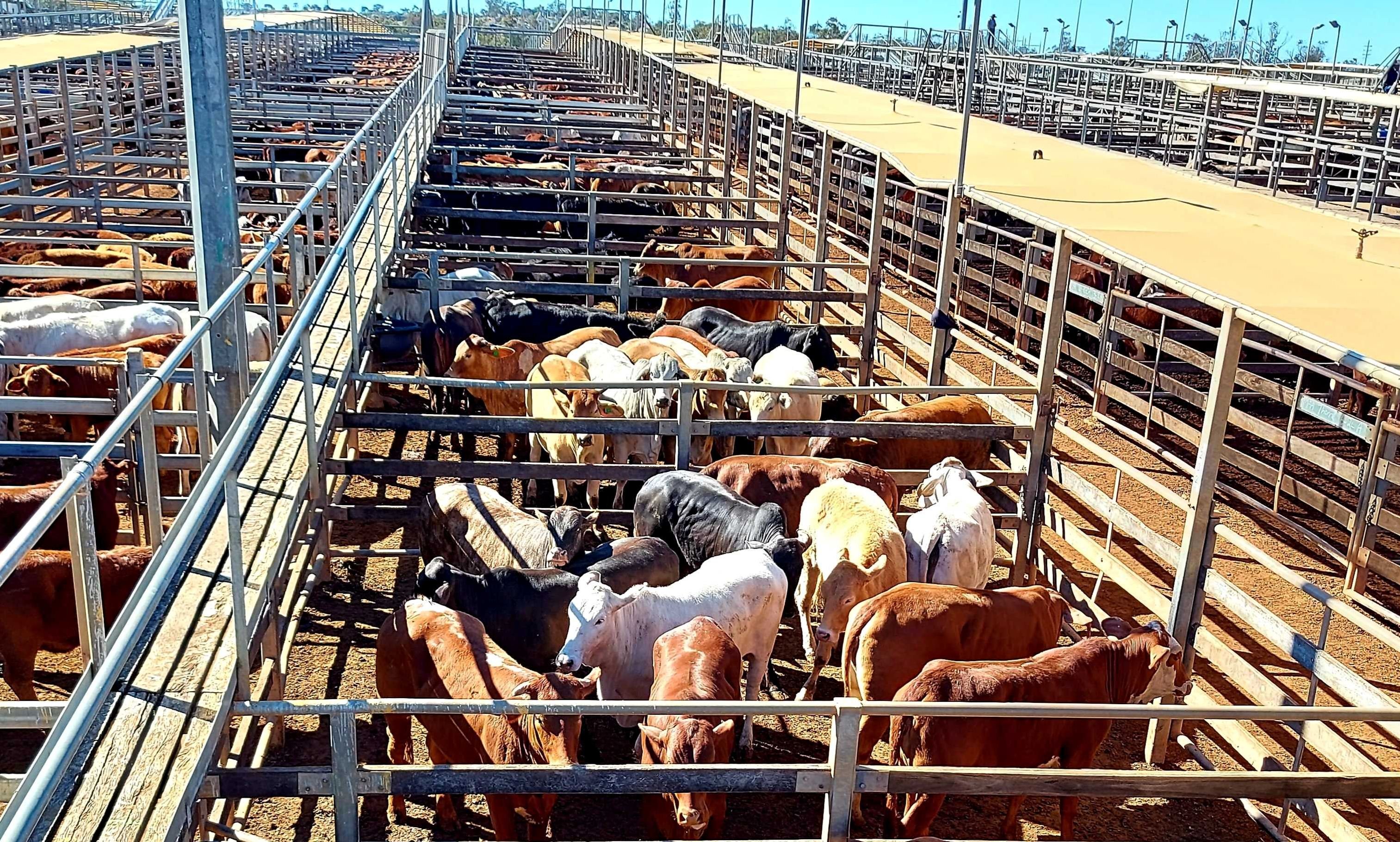 We’ve seen some big swings in cattle prices in Australia over the past few years and with updated consumer price indicators from the ABS for the June 2023 quarter, we are able to run the numbers on deflated cattle prices to see how current levels stack up to historic values, when we convert all the older prices to a current dollar value in $/head.
We’ve seen some big swings in cattle prices in Australia over the past few years and with updated consumer price indicators from the ABS for the June 2023 quarter, we are able to run the numbers on deflated cattle prices to see how current levels stack up to historic values, when we convert all the older prices to a current dollar value in $/head.
The 50-year average Eastern Young Cattle Indicator (EYCI) sits at $936 per head, based on a 300kg live weight animal.
The current EYCI at 440c/kg cwt, or 238c/kg lwt, works out to around $715 per head for a 300 kg lwt animal, so we are about 24% under the long-term average deflated price for young cattle.
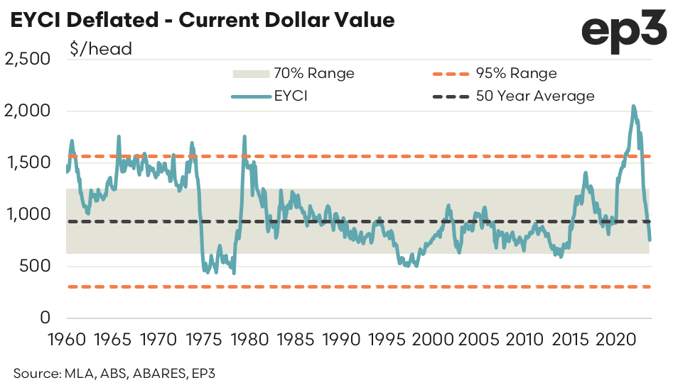
The normal range in EYCI pricing, based on 2023 dollar values, is between $620 to $1250 per head and is highlighted by the grey shaded 70% zone (which is the range where the EYCI price has historically spent 70% of the time).
Extreme pricing is when the EYCI goes outside the 95% range, either above $1,565 per head or below $305 per head, for a 300 kg animal.
The 50-year average for the National Heavy Steer comes in at around $1,600 per head, based upon a 550 kg live weight steer.
The current National Heavy Steer price is 265 c/kg lwt, which translates to a price of $1,458 per head, for a 550kg steer.
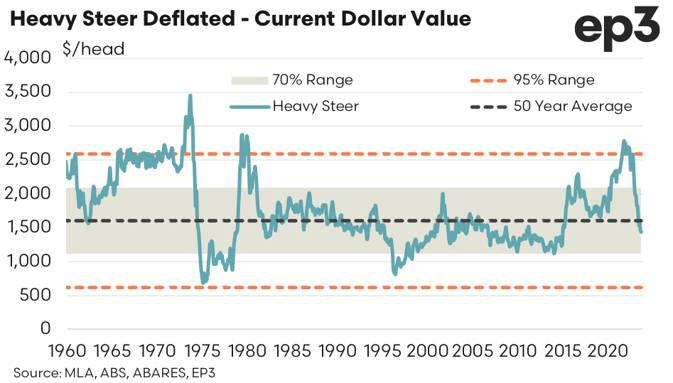
This places the current Heavy Steer price around 9% under the long term deflated price.
The normal range in pricing for Heavy Steers is between $1,100 t0 $2,100 per head and prices would be considered extreme when it goes above $2,585 or below $620 per head, based upon a 550 kg steer.
A real low blow for sheep producers
After taking a look at the deflated cattle prices, we knew that we had to compare how the recent sheep and lamb price falls have stacked up against the historic current dollar value.
ABS consumer price data was used to adjust the c/kg cwt prices for sheep and lamb going back to the mid 1950s so that a value in 2023 dollars was able to be obtained.
The current trade lamb indicator sits at 444c/kg cwt, which is 30% below the 25-year average deflated level of 636c/kg cwt.
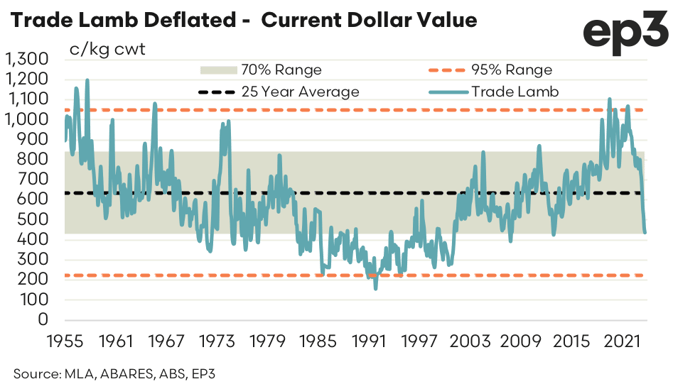
The 70% range in trade lamb pricing is between 430c/kg cwt to 840c/kg cwt, so we are only just hanging onto normal levels.
Meanwhile, it is pretty rare to see the trade lamb price breach outside the 95% range, which is below 220c/kg cwt or above 1050c/kg cwt.
Since the mid 1950s, deflated trade lamb prices have only been outside this extreme range for 5% of the time.
The 25-year deflated average price for mutton sits at 370c/kg cwt and currently the national mutton indicator is at a meagre 131c/kg cwt.
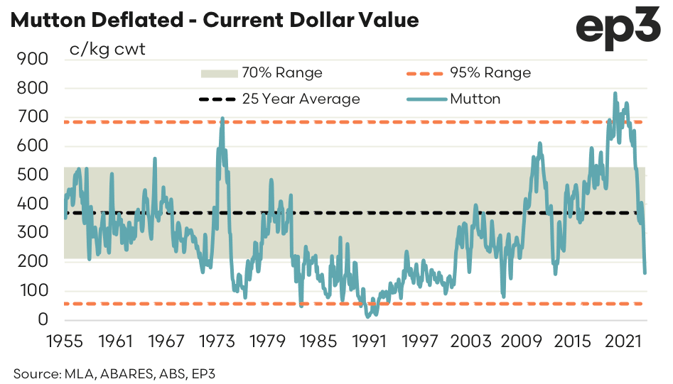
So presently, mutton pricing is below the long-term average deflated price by around 65%.
It is also below the lower end of the normal range as the 70% range sits between 210c/kg cwt to 530c/kg cwt.
Pricing for mutton would be considered extreme when it is above 685c/kg cwt or below 55c/kg cwt.
No flying pig here
The 30-year average deflated price for Australian pigs sits at 415c/kg Hot Standard Carcass Weight (HSCW), meanwhile the Australian Pork Limited (APL) Eyes & Ears report has pig pricing at an average of 358c/kg HSCW for September 2023.
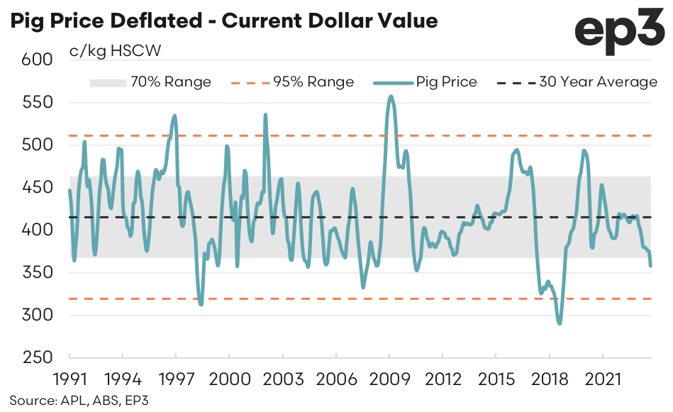
This is nearly a 14% discount to the long-term average price in 2023 dollar values.
The normal range in pig pricing, as outlined by the 70% grey shaded range, is between 365c/kg HSCW to 465c/kg HSCW, so we have just drifted under the normal range during September.
Pig pricing would be considered extreme when it is outside of the 95% range, which is above 510c/kg HSCW or below 320c/kg HSCW.
Historically, deflated pig pricing has only been outside of the 95% range for 5% of the time since the early 1990s.
This article originally appeared on Episode3. Republished with permission.
 Results
Results
